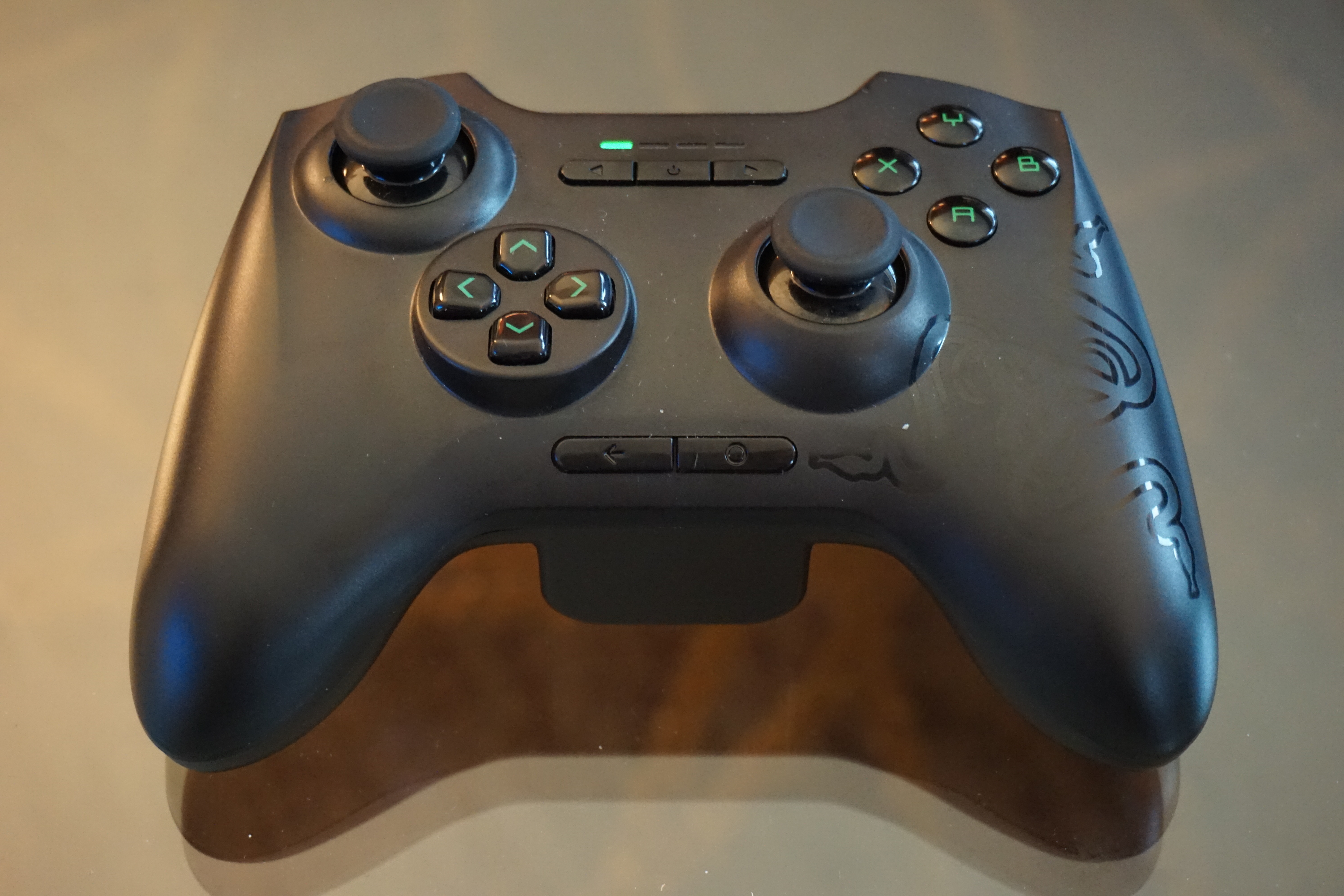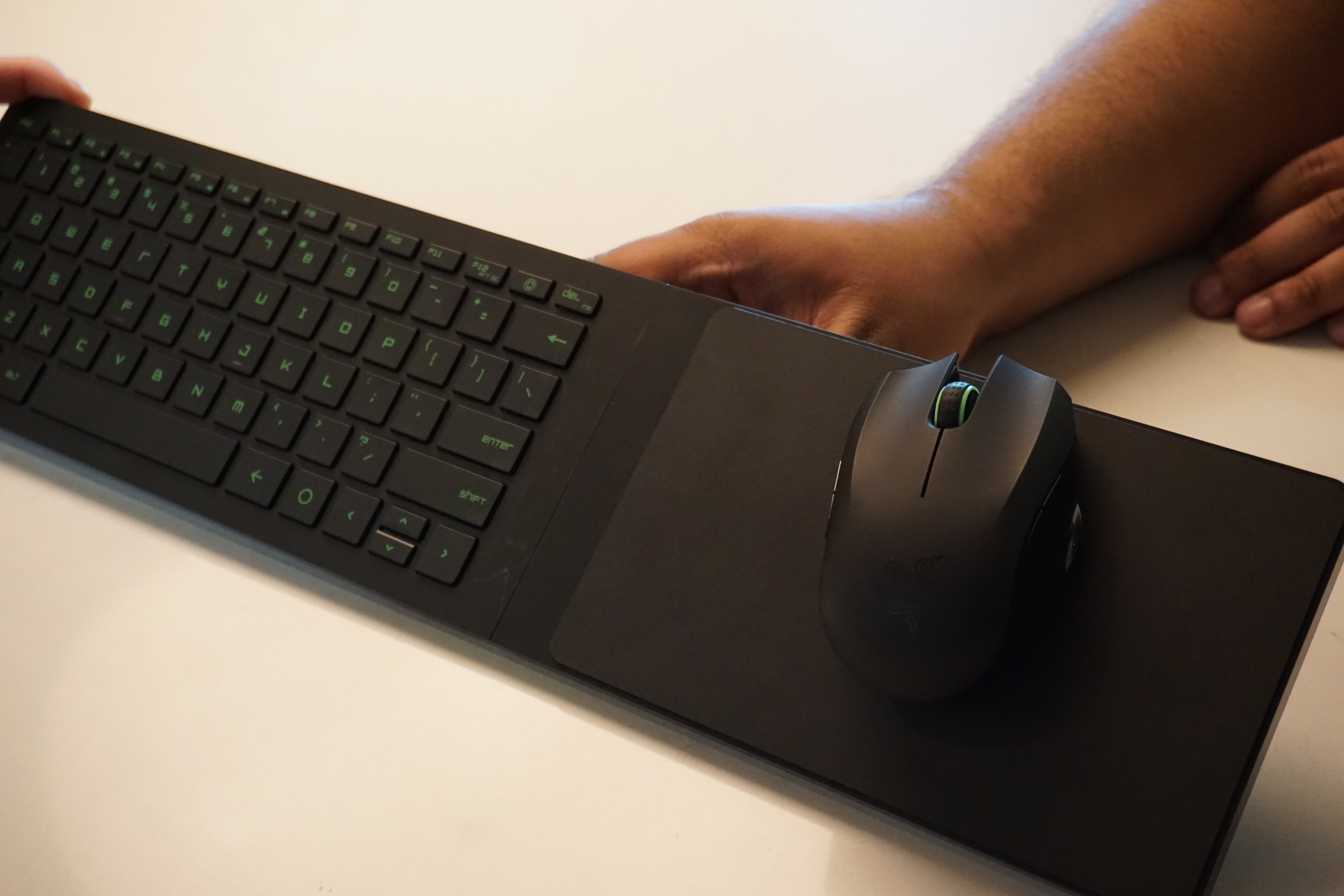Hands On With The Razer Serval And Turret
Razer's Forge TV is a bold move by Razer to bring an Android streaming device to the scene. While its main function is to stream Android games, it also has the ability to function as a central entertainment system, allowing the use of apps such as Netflix, Hulu Plus, and YouTube, and it also brings PC games to the living room with the help of the Cortex: Stream.
Obviously, such a device requires a proper gaming controller for Android games, and the Serval controller is Razer's solution. In terms of the Cortex: Stream software, a mouse and keyboard were needed for the living room so gamers wouldn't have to constantly bring their mouse and keyboard back and forth between rooms. Razer's answer was the Turret, a lapboard complete with a keyboard, mousepad, and mouse. As we looked at Forge TV in action, we also had the opportunity to get a feel for how both peripherals worked with the device.
Hands On With Serval
First up was the Serval conroller. Razer has previous experience with controllers, specifically the Sabertooth, which supported the Xbox 360 and PC. With that experience, it's no surprise that the Serval looks very similar to the Sabertooth in terms of the overall layout. The controller has a smooth matte finish, and even with the Razer logo dominating the far right side of the controller, I barely felt the logo's texture while holding it. One thing that stuck out to me were the contoured handles under the triggers. It's a small feature that provides a bit of comfort and grip since it's placed precisely where your fingers are resting in the rear of the controller. Since Forge TV works with Android devices, it also includes a clip which can be attached to the controller, specifically in two deep slots near the top, for continued gameplay on your mobile device. At first glance, it looks a bit flimsy, but it's actually very secure and requires a bit of force to pry it from its lock on the controller.
Unfortunately, the Serval also suffers from a few setbacks. Unlike the smooth finish of the Y, A, B, and X buttons, the direction buttons are very glossy, which makes it look bad and stick out from the Serval's matte finish and smooth texture. I played a racing game with the controller and what I noticed with the analog stick is a lot more tension than I would normally expect from a stick. At times I felt like the stick would fight me to return to the center if I loosened my finger pressure, and when it does come back I could really hear the springs rattle underneath the surface. Those who have played with the Xbox One will notice that the console's controller has ridges on the analog stick as a way to prevent the thumb from slipping off the stick. Unfortunately, the Serval seems to lack those ridges, so there will be times when your thumb might slip when pushing or pulling the stick.
Perhaps one of the biggest oversights is that the Serval costs $79.99. Considering the fact that it only supports the Forge TV and lacks vibrations, it seems very expensive for what it offers. It might feature dedicated buttons to control media playback and controls for an Android, but both the Xbox One controller and DualShock 4 are not only $20 cheaper, but they can perform the same functions without specialized buttons, feature vibrations, and can be used in a PC platform. For such an expensive controller, the Serval doesn't have any distinguishing features up its sleeve.
Hands On With Turret
Seeing pictures of the Turret lapboard is one thing, but actually having it on your lap is an entirely different experience. Initially, I was concerned about the Turret slipping on my lap, but what the initial photos didn't show was that it actually has a ridge-textured bottom which instantly solves this problem. The chiclet-styled keys felt great, and I only needed light touches to press the keys. The most interesting feature was an attached mousepad that could be folded away when not in use. The included mouse has a slight magnetic attraction to the mousepad to prevent it from slipping off the mousepad, but I didn't really feel any of the magnetic pull as I moved the mouse across the surface.
Unlike the Serval, I really liked the Turret, but it also has its faults. Razer was very proud that the mouse was ambidextrous, but that's completely useless since the mousepad is restricted to the right side of the keyboard. Instead of a detachable component the mousepad is attached to the keyboard with a hinge and two small pin locks in the middle. It would have been very easy to also put those pin locks and slots on both sides of the mousepad and keyboard so that it would work for both left- and right-handed users. Speaking of those pin locks, they're not very strong. Put enough weight on the far ends of the lapboard and it begins to fold back to its storage profile with the lapboard folded underneath the keyboard.
Get Tom's Hardware's best news and in-depth reviews, straight to your inbox.
And then there's the price. Just like the Serval, the Turret's nail in the coffin is the selling price of $129.99. A quick Amazon search for wireless keyboards and mice shows the same mouse and keyboard combination at dirt cheap prices. Keeping that in mind, it now seems that the Turret's folding profile and magnetized mousepad are just features that one can do without when it comes to cost.
In the end, Razer's Forge TV is still something that has the potential to be an exciting new platform for Android gaming, and while the supporting cast of peripherals can get the job done, they're either missing features or are just too expensive for what they offer. Razer is betting that Forge TV will catch on and attract many users which will make people buy the controls. But even if it is successful in the future, one can hope that Razer, or even a third party provider, makes a better controller and lapboard with an appropriate balance between features and price.
Follow us @tomshardware, on Facebook and on Google+.
Rexly Peñaflorida is a freelance writer for Tom's Hardware covering topics such as computer hardware, video games, and general technology news.
-
bpbarrette Does this have backlighting? The pictures on Razer's site make it look like it does, but the specs on Razer's site don't mention it, so I suspect it doesn't.Reply -
SkyBill40 It seems rather remiss of Razer to include an ambi mouse... yet fix the mouse pad to the right side only. I'm not left handed so it doesn't bother me all that much, but I could see those who are left handed complaining loudly.Reply
Seeing as this was just released, perhaps there's still time for Razer to make some kind of adjustment to the design to allow the mouse pad to be flopped to either side. I'm not all too surprised on the price. It seems pretty spot on seeing you're getting a high quality keyboard and a mouse as well. -
Innocent_Bystander ReplyIt seems rather remiss of Razer to include an ambi mouse... yet fix the mouse pad to the right side only. I'm not left handed so it doesn't bother me all that much, but I could see those who are left handed complaining loudly.
Most of us lefties have been ignored with nice ergonomic peripherals long enough that we learned to use the mouse with our right hands a long time ago. It feels weird to operate a mouse with my left hand now and I only do it if my right hand gets repetitive strain injury. -
HYPERBOLOCO Would have been nice to see IRIS graphics in the XPS 13. Would have also been nice to see better graphics in the XPS 15 for that price; come on Dell a 700 series GPU.....really? Should have been at minimum a GT850m with GDDR5 or a GTX850m.Reply
Seems like ASUS will be providing better performing ultrabooks than dell this year. -
Angelus de Mortiel Razer Motto: Make it pretty. Make is expensive. Make it cheap.Reply
After seeing hundreds of reviews of dozens of Razer products on various websites mixed with my own experience, I will never consider the premium price that Razer charges to be for anything more than looks. Their products are not built with any kind of durability in mind, which is makes the expensive price tag even harder to swallow.

